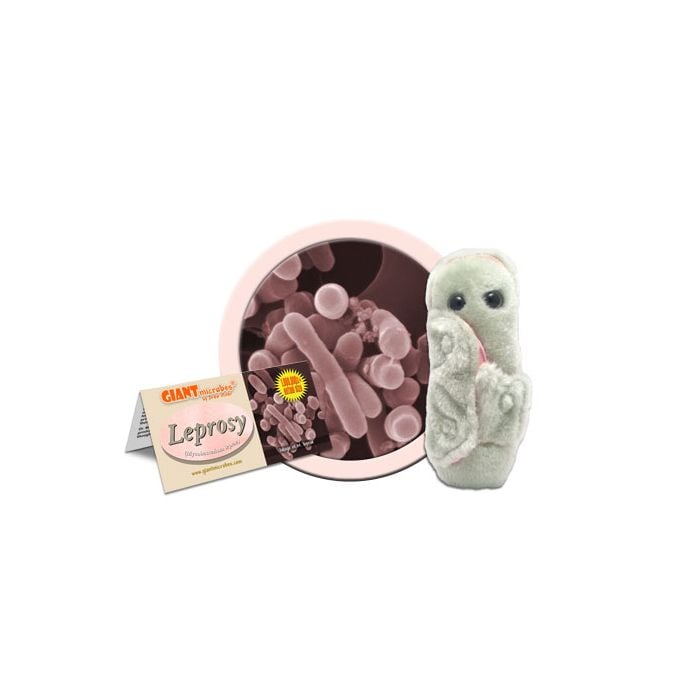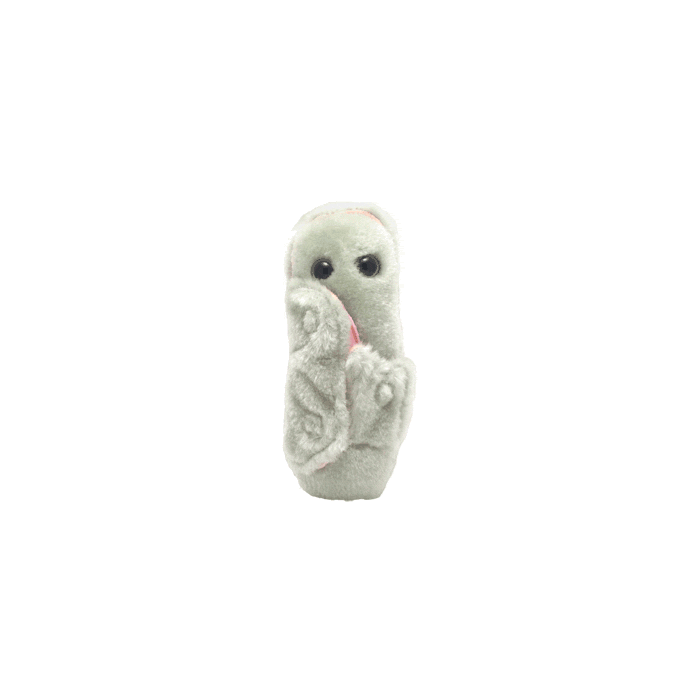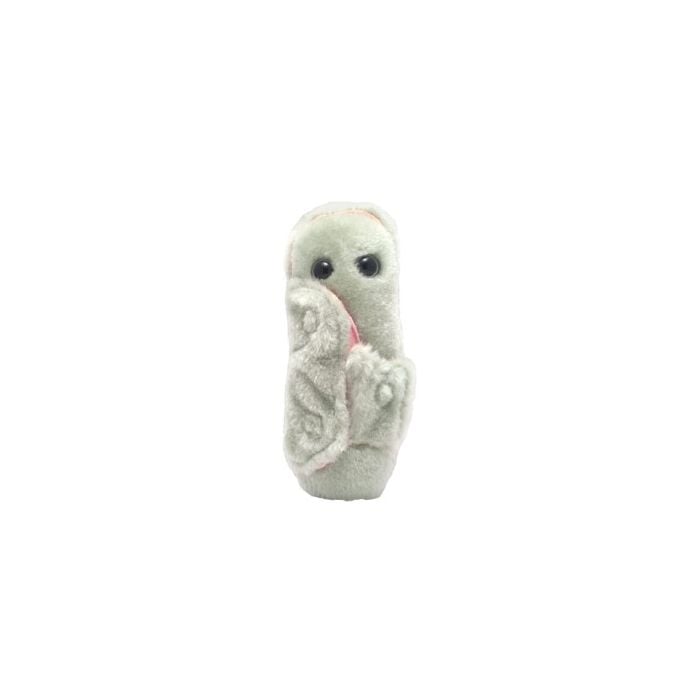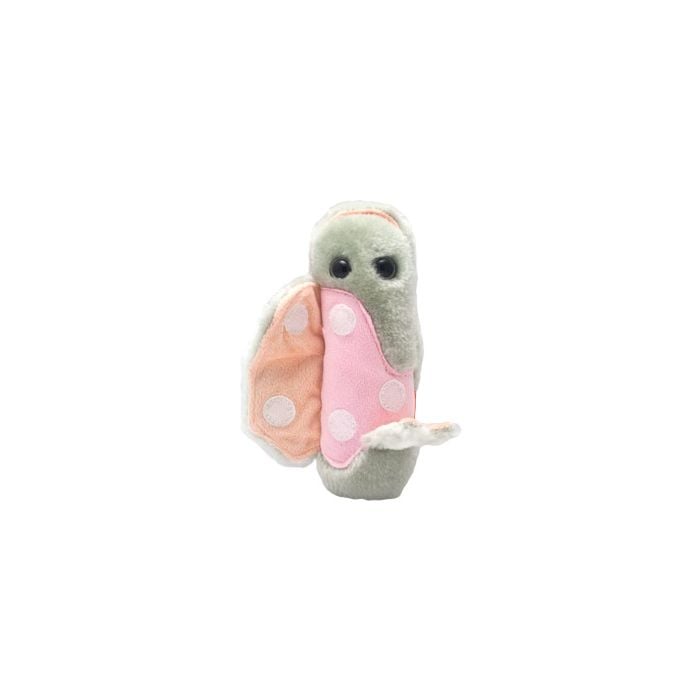Leprosy (Mycobacterium leprae)
Out of Stock
Leprosy doll comes with velcro and flaps that show what's underneath.
Product Details
Additional Information
| Sizes | Giantmicrobes are based on actual microbes, cells, organisms and other critters, only 1,000,000 times actual size! Gigantic (GG) 16-24" XL (XL) 10-15" Original (PD) 5-8" Keychain (KC) 2-4" with clip |
|---|---|
| Materials | Plush from all new materials. Stuffed with polyester fiber fill. Surface washable: sponge with water & soap, air dry. |
| Packaging | Each plush microbe includes a printed card with fun, educational and fascinating facts about the actual microbe or cell. |
| Safety | Every product meets or exceeds U.S. and European standards for safety. For ages 3 and up. |
All about Leprosy (Mycobacterium leprae)
FACTS: Leprosy is an ancient disease which manifests itself as nerve damage, bulbous nodules, and skin sores. Although it is not very contagious and has an incubation period of many years, the horrifying disfigurement that leprosy produces has made it one of the more feared diseases.
First recorded by the Egyptians in 1500 B.C., leprosy is frequently mentioned in the bible and is traditionally credited with having tormented Job. Sufferers were historically cut off from their families and communities, compelled to carry warning bells, or condemned to leper colonies. And with some rationale: although leprosy itself will not cause body parts to fall off, as is commonly thought, it can damage the body sufficiently so that numbness and secondary infections ultimately result in horrifically deformed fingers and toes.
Fortunately, in the 1930’s drugs were discovered which could combat the disease, and by the 1960’s additional treatments were developed which could eliminate it. Leprosy is now a curable condition, and new infections worldwide have been plummeting. Provided treatment is administered in the early stages, permanent skin and nerve damage and disfigurement can now be prevented.
Nevertheless, in the poorest parts of the world where modern treatments are hard to obtain, leprosy continues to seek out its victims. But public health efforts are continuing, raising hopes that victory peals may soon ring to celebrate the permanent isolation of this ancient scourge.
| Name | Hansen’s Disease |
|---|
| Actual Size | The bacteria, Mycobacterium leprae, ranges from 1-8 micrometres in length and 0.2-0.5 micrometres in diameter. |
|---|
| Where It Lives | Nerves in lower temperature extremities, like the hands and feet, are the most common location for infection. |
|---|
| System | Attacks the nervous and integumentary (skin) systems. |
|---|
| Commonality |
Today, about 180,000 people worldwide are infected by leprosy. Larger outbreaks occur in developing countries, especially India and Indonesia. |
|---|
| Symptoms | Disfiguring, pale marks on the skin that do not do away, loss of feelings in limbs, and muscle weakness. |
|---|
| Cure | Dapsone was the original antibiotic used to combat the bacteria, however when genetic resistance became an issue, rifampicin and clofazimine were leading treatments. Physical therapies are used to improve chronic bodily impairments. |
|---|
| Deadliness/Severity | Leprosy rarely causes death, but if left untreated can lead to loss of fingers, toes, or sight. |
|---|
| Infectiousness | The disease is spread by a droplet from the mouth or nose entering the body of another. Casual contact with a victim rarely leads to infection. |
|---|
| History |
In 1200 AD outbreaks across Europe were devastating, there were 19,000 leprosy hospitals In 1873, Dr. Armauer Hansen of Norway discovered Mycobacterium leprae by looking under a microscope. Dapsone was developed when German scientist, Paul Ehrlich, was testing how certain dyes kill microbes. |
|---|
| Fascinating Facts |
Men are twice as likely to contract Leprosy than women. Hundreds of years ago, leper colonies were created to quarantine those with the disease on Crete of Greece and Chacachacare Island in Trinidad and Tobago. Those infected usually do not show symptoms until 3-8 years after initial exposure. In Culture: An episode of Monk is titled Mr. Monk and the Leper. In 1980, the television movie Father Damian: The Leper Priest aired. |
|---|









